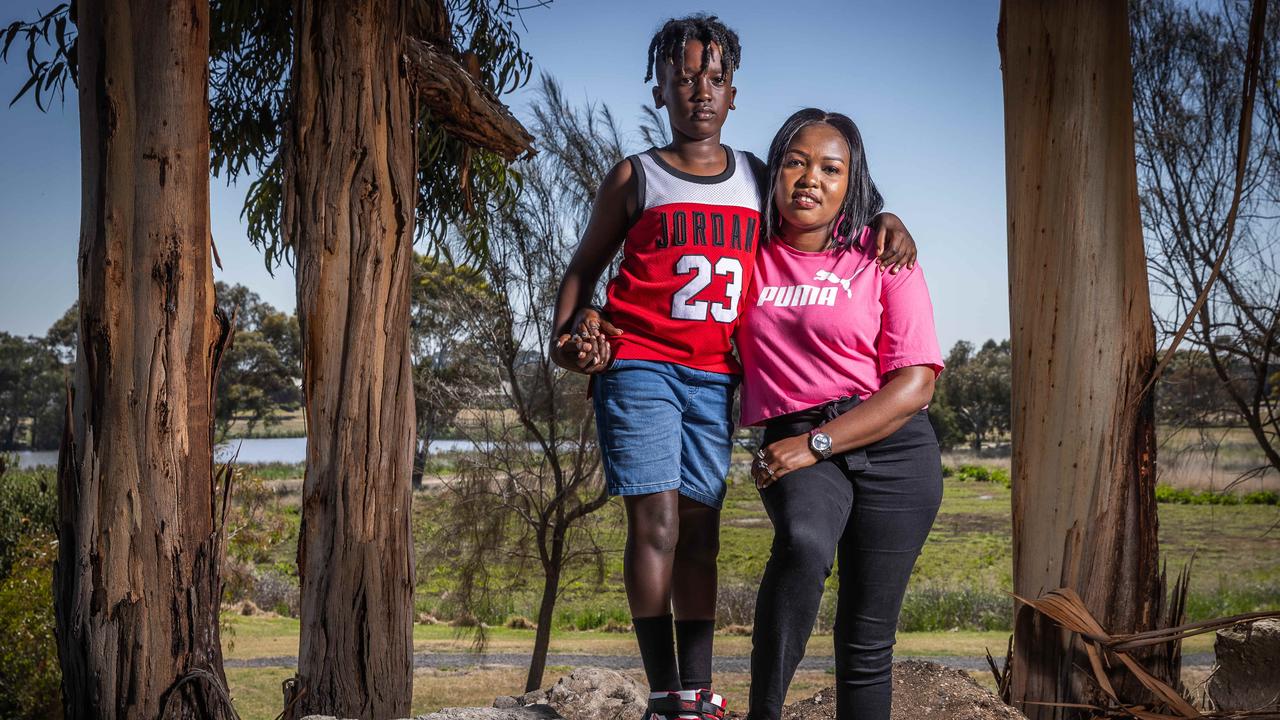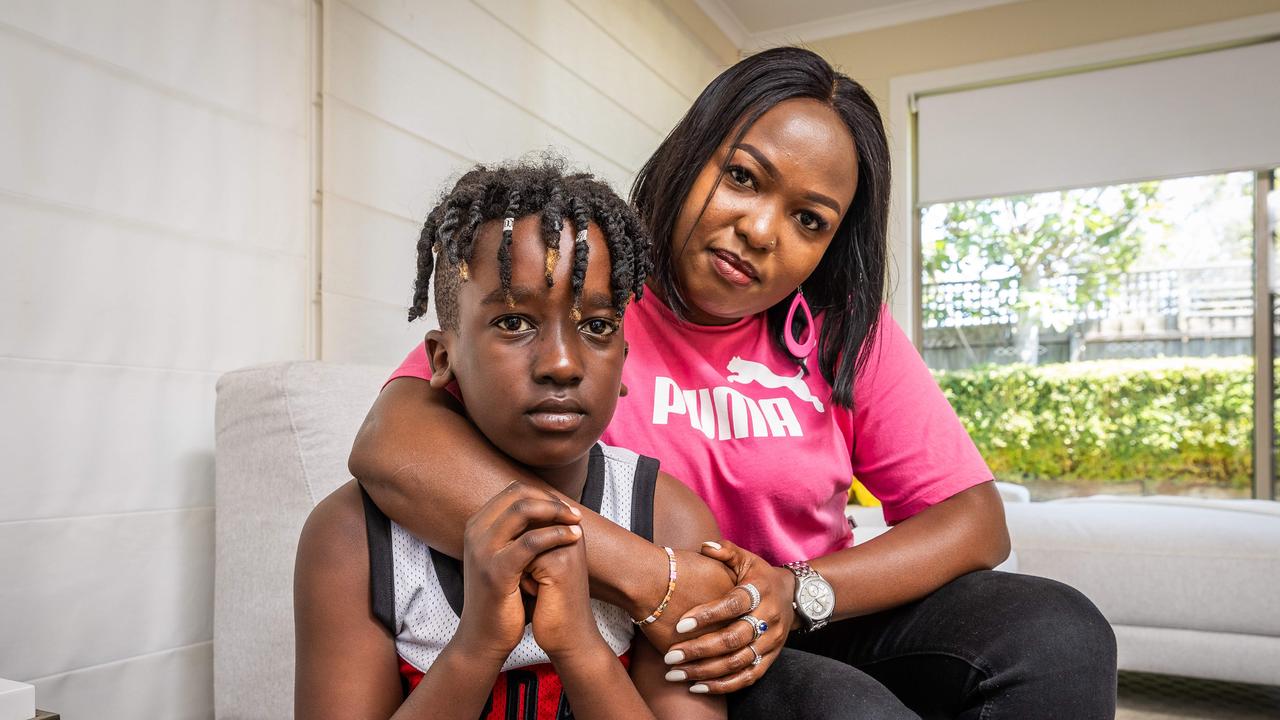Gold Coast helicopter crash passenger tells how she survived the tragedy
A year after the Sea World chopper disaster, a survivor recounts the horrifying ordeal that transfixed a nation.
QLD News
Don't miss out on the headlines from QLD News. Followed categories will be added to My News.
Hurtling to the ground in a tangle of metal, shrapnel and wires seconds after the helicopter collision that shocked the nation, Winnie de Silva vowed that death would not take her.
Ms de Silva and her nine-year-old son Leon were two of the five passengers on board a doomed helicopter joy flight that collided with another chopper and plunged into the Gold Coast Broadwater on the edge of a sand bank near the Sea World theme park on January 2.
Four people died, but Ms de Silva and Leon miraculously survived, along with all seven occupants of the other helicopter, who amazingly emerged with little more than cuts and scratches.

Now, just days before the anniversary of the Sea World Helicopters disaster, Ms de Silva has spoken of the enormous impact taken by the tragedy, her belief that “angels were sent to protect” them and her sorrow for the dead.
“I still look at the pictures and think, how did we survive?” she told The Courier-Mail from her home at Geelong in Victoria.
“It’s really mixed emotions.
“I’m very grateful to have survived. It’s a miracle. We survived and other people didn’t make it which is very sad.
“There were just angels sent to protect us.
“(But) I feel sad that my life has changed. I’ve lost so much.
“We have to live with this for the rest of our lives.”

Ms de Silva, 33, recalled the terrifying moment the two helicopters collided and willing herself to survive what investigators have since described as an impact “likely not survivable”.
“I didn’t think anything negative could ever happen. I knew everyone else is doing it, so let’s just do it. It was really exciting,” she said.
Then, just 23 seconds into the flight, came a loud bang.
“I thought it was just engine failure, but it was a terrifying ‘bang’.
“Things started cracking and falling on our faces and wires falling on our faces.
“It was just chaos.”

She recalled seeing pilot Ash Jenkinson frantically wrestling with whatever controls remained after the collision sliced off chunks of their chopper, before realising “we are going to crash and die”.
“That’s where just my conclusion was.
“He’s definitely not going to make it – we are going to crash and die.
“But) I remember saying I am not going to let death come to us.”
The impact and the rescue operation that followed is a chaotic blur of memories – someone holding her hand, asking her name, telling her that her son was going to be okay, while she lay trapped in the wreckage of the helicopter with aviation fuel gushing down her face.

“I remember telling the guy (one of the first people to reach the crash site), I’m not going to make it because what I’m feeling, oh my God, I can’t even explain, all my body is dead.
“There’s sand, there’s aviation fuel, there’s burning, there’s everything, this guy just came and washed my face.”
Eventually she was freed from the precarious position and rushed to hospital before embarking on the long road to recovery.
Mr Jenkinson, Sydney mum Vanessa Tadros and British couple Ron and Diane Hughes never made it, pronounced dead on the sandbank next to the ruined helicopter.
Mrs Tadros’ 10-year-old son Nicholas survived and after having part of his right leg amputated and spending months in hospital, he too is embarking on his own life-changing recovery journey.
While Ms de Silva was treated in Gold Coast University Hospital for a multitude of injuries including breaks or fractures to her shoulder, hip bone, collarbone and both legs, Leon was in Brisbane’s Queensland Children’s Hospital fighting for his life with severe traumatic brain injuries.
As Leon lay in an induced coma, Ms de Silva willed him to live.
“I made him do the helicopter – he didn’t want to do the helicopter. He said, ‘No mum, I don’t want to,’ and I was feeling really guilty because if he doesn’t make it, I’ve just cut this life, I’ll be guilty the rest of my life.
“It’s been days and he’s not responding at all. He’s not responding to anything in the tubes. So they (doctors) ask if they could remove the machine.
“So I said, yeah, yeah, you can go ahead. But this time I’m holding so tight and praying so tight like, ‘God, if those machines come out, you take over because we need this boy to breathe.’ I need him back.”

The steps to recovery have been long, slow and painful.
Leon made news headlines in March when he amazingly returned to the basketball court after his release from hospital, but the recovery has been far from smooth sailing, both physically and emotionally.
“We still have hiccups here and there and I know life will not be the same again,” Ms de Silva said.
“He (Leon) has so much anger.
“It’s been so challenging for him. It’s really sad.
“(A boy at school said in a chat message), ‘You should have died in that helicopter.’
“I don’t know why he would say something like that.
“It emotionally damages him (Leon).”
Ms de Silva has vowed not to be broken by the tragedy and credits her Christian faith with helping to heal wounds.
“I do fear death right now, I really fear death. I don’t think I can ever even go to a funeral,” she said.
“I’m just praying to God. God makes me focus on doing my job (and) telling other people that God exists instead of thinking of the death.
“Because if I think about death too much, I don’t know, maybe I could die.”
More Coverage
Originally published as Gold Coast helicopter crash passenger tells how she survived the tragedy
Read related topics:Sea World Chopper Disaster




